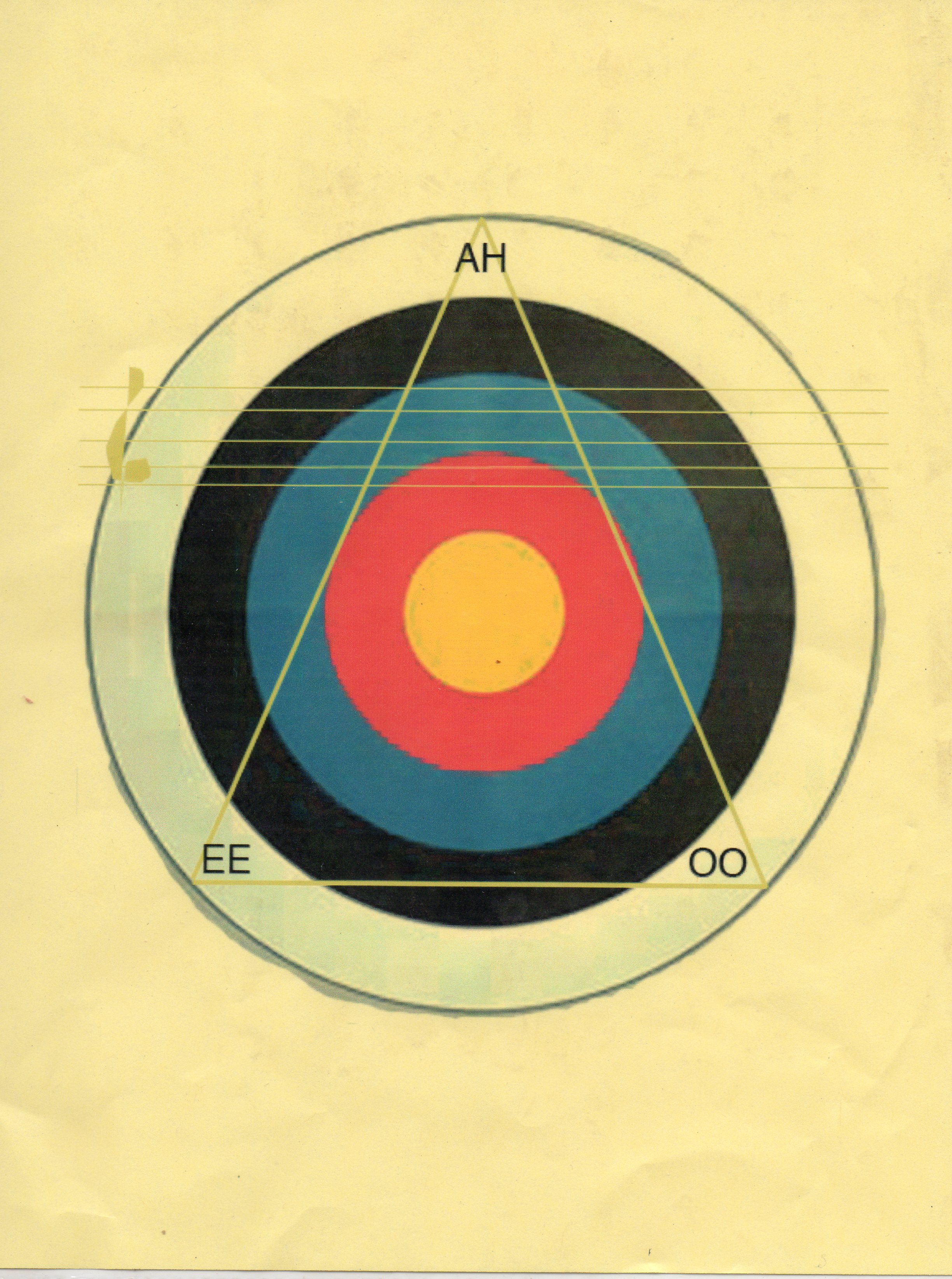Going back to the prior lesson, you can see that singers who are utilizing their vocal
tracts for the best possible sound are not only responsible for singing pitches in tune,
but are also attempting to match the size of the resonator (the vocal tract) to resonate
the same pitch (or octaves of that pitch above or below.) That was why the title of that
lesson was called "rubbing and patting." (look up "octave").
Now you need to know a little bit about how "sound in a tube" works and what "formants"
are. There are certain rules in physics which pertain to sounds which occur in "tubes."
Although our vocal tracts are NOT exactly the same as a tube which is closed at one end,
many of the properties in both a tube and the vocal tract create similar sonic
situations.
You have already noticed that "shaping" the vocal tract for a vowel creates identifyable
pitches.

The pitches you get when you tap the throat are approximately F4 for the vowel
AH, F3 for vowels EE and OO, C4 for vowels EH and OH
These are the approximate pitches of the five primary Italian vowels

Now: here is a vowel chart with the eleven (11) standard American English vowels
Thanks to my former student and friend Diane Gardeman from Los Angeles Pirece College.
(If anyone can come up with a better sentence than this, I believe everyone would be
appreciative!)
It is interesting to note that every vowel between AH and EE has a corresponding "same"
pitch as the vowels from AH to OO.
Why?
Here's where some of the "rubbing and patting and switching" come in. IF THE JAW IS LEFT
IN ALMOST THE SAME POSITION WHEN TAPPING, then as the tongue changes position inside the
vocal tract, the vowels from AH to EE will be made. When going from AH to OO the lips
move (and not the jaw) and each vowel has a "corespondant" on the other side of the
triangle above....... and yes.....this is simplified, but almost really accurate.
Now try tapping through all the vowels in American English, beginning with the
"open-mouthed" AH vowel. (from AH to EE and from AH to OO )
Remember!!! - This is all about "tuning" the instrument and
the pitches you sing - like the trombone player. The idea behind all this "tuning the
instrument" is for you to be able to get the most rich and powerful sound with the least
amount of effort.
Most "pop" singers do not utilize this information and sing (as the old school
would say) "from the throat."
There are definitely pop singers who DO use the resonators in this "tuning"
method, but most sing without this skill because they have microphones and amplification
systems that make singing with extra resonance somewhat unnecessary.
Does this mean a pop singer shouldn't bother with these
techniques? I certainly don't believe so! Use of these resonance "tuning" techniques add
more diverse and useful sounds for a more well rounded interpretation of any song
material
Now go to my other website:
dennisparnell.net/dp
and explore the exercises - read the material and we'll begin exploration in
class.


